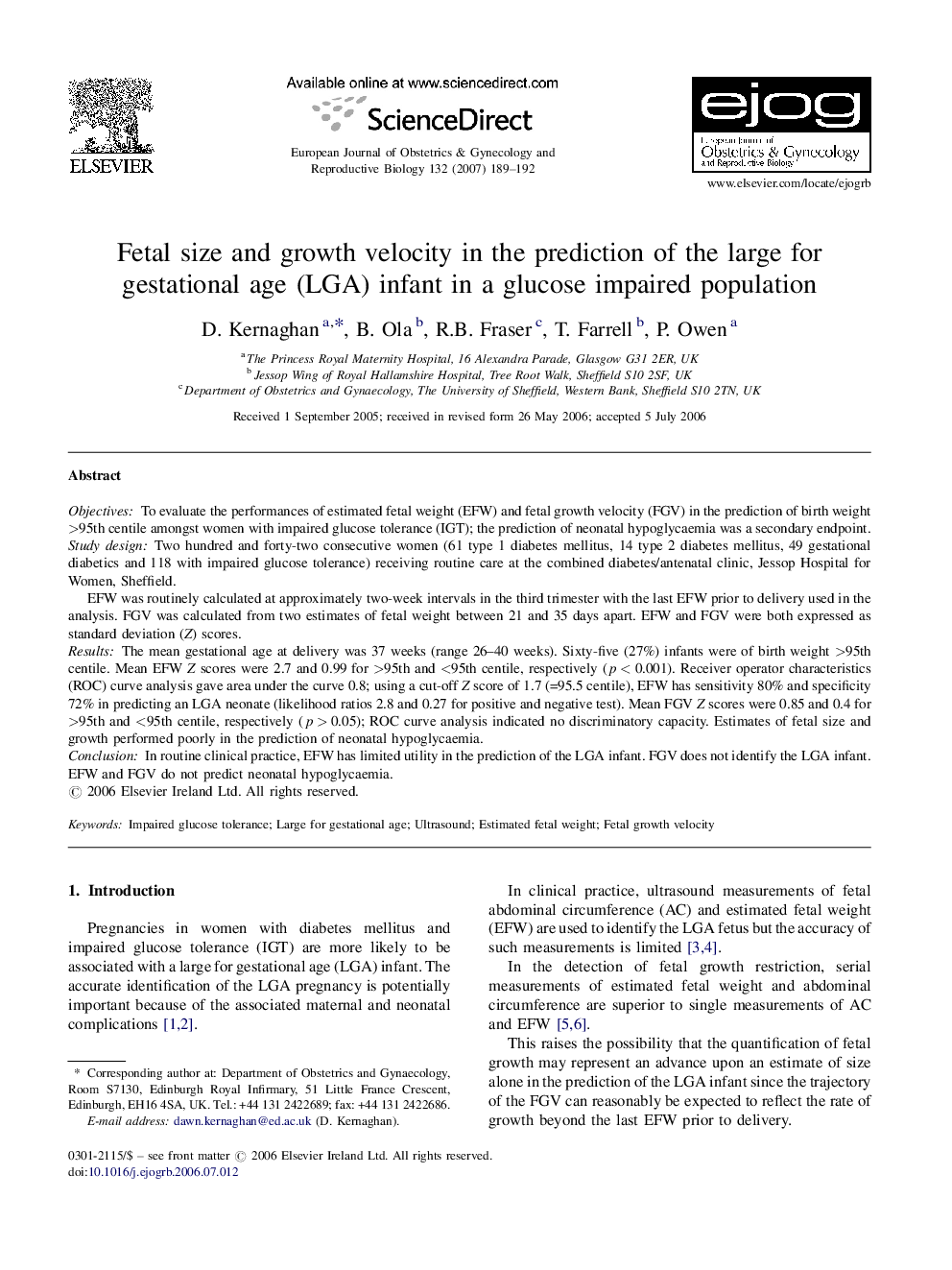| کد مقاله | کد نشریه | سال انتشار | مقاله انگلیسی | نسخه تمام متن |
|---|---|---|---|---|
| 3922145 | 1599889 | 2007 | 4 صفحه PDF | دانلود رایگان |

ObjectivesTo evaluate the performances of estimated fetal weight (EFW) and fetal growth velocity (FGV) in the prediction of birth weight >95th centile amongst women with impaired glucose tolerance (IGT); the prediction of neonatal hypoglycaemia was a secondary endpoint.Study designTwo hundred and forty-two consecutive women (61 type 1 diabetes mellitus, 14 type 2 diabetes mellitus, 49 gestational diabetics and 118 with impaired glucose tolerance) receiving routine care at the combined diabetes/antenatal clinic, Jessop Hospital for Women, Sheffield.EFW was routinely calculated at approximately two-week intervals in the third trimester with the last EFW prior to delivery used in the analysis. FGV was calculated from two estimates of fetal weight between 21 and 35 days apart. EFW and FGV were both expressed as standard deviation (Z) scores.ResultsThe mean gestational age at delivery was 37 weeks (range 26–40 weeks). Sixty-five (27%) infants were of birth weight >95th centile. Mean EFW Z scores were 2.7 and 0.99 for >95th and <95th centile, respectively (p < 0.001). Receiver operator characteristics (ROC) curve analysis gave area under the curve 0.8; using a cut-off Z score of 1.7 (=95.5 centile), EFW has sensitivity 80% and specificity 72% in predicting an LGA neonate (likelihood ratios 2.8 and 0.27 for positive and negative test). Mean FGV Z scores were 0.85 and 0.4 for >95th and <95th centile, respectively (p > 0.05); ROC curve analysis indicated no discriminatory capacity. Estimates of fetal size and growth performed poorly in the prediction of neonatal hypoglycaemia.ConclusionIn routine clinical practice, EFW has limited utility in the prediction of the LGA infant. FGV does not identify the LGA infant. EFW and FGV do not predict neonatal hypoglycaemia.
Journal: European Journal of Obstetrics & Gynecology and Reproductive Biology - Volume 132, Issue 2, June 2007, Pages 189–192